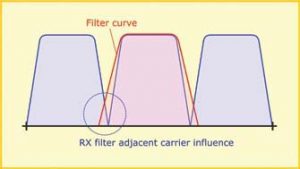
Jörg Rockstroh, senior R&D engineer, WORK Microwave GmbH, outlines the current status of technology adoption and strongly advocates universal standards over proprietary approaches.
Part 1. Current status of technology adoption
When it comes to IP modem technology trends, a wide range of technologies are available. However, this article will focus on DVB-S2 and similar SCPC type modems in particular. The different technology stages of a DVB-S2 IP modem will be used to highlight the approaches for optimisation and predict future technological trends based on those current developments.
DVB-S2 is used in the example because it is the widely adopted state-of-the-art technology, but the functional groups would be the same in a legacy DVB-S or turbo code SCPC modem.

Establishing a network connection over satellite involves four major steps: an IP stack including IP-based optimisations, encapsulation, forward error correction and finally modulation and signal shaping. First, IP-based optimisations cover a wide range of techniques such as IP header compression, TCP acceleration, prioritisation of different traffic types, reorganisation and repackaging of the packets to optimise packet rate or size, and so on. These methods are not necessarily a part of the IP modem itself, as they are not satellite specific and may apply to other communication scenarios as well. On the other hand, adaptive coding and modulation (ACM) can change the available bandwidth rapidly. Therefore, on the satellite, IP optimisation has to react very fast to account for changing environmental conditions.
Second, encapsulation is the process of organising IP packets into a stream for transmission over satellite. For many years multi-protocol-encapsulation (MPE) was the method of choice. IP data was packaged into an MPEG transport stream, which was then transmitted over DVB-S or DVB-S2. As this involves a lot of overhead, with DVB-S2, a more effective way for transportation was introduced: generic stream encapsulation (GSE). By adding only a 4-byte header and an optional MAC address to the IP packet, the resulting overhead is negligible and encapsulation is generally considered “optimum”.
Interestingly, even though GSE was introduced in 2007, it took three more years until the market began to take advantage of this feature
Interestingly, even though GSE was introduced in 2007, it took three more years until the market began to take advantage of this feature.
Third, forward error correction, modulation and signal spectrum shaping are different, from a technological point of view, but are taken as a common group for the purpose of this feature, as they are part of the DVB-S2 standard. Touching the signal will involve hardware changes, making this a sensitive topic. Operators of equipment want to protect their investments and be interoperable with existing platforms. Optimisations here take place mainly in areas that had not been in the original focus of the standard, especially the new Ka-band transponders of several hundred MHz compared with the former 72 MHz [maximum] Ku-band transponder width. Although the standard itself has not yet been changed, a few additions are already on the move.
The third section is undoubtedly where the most developments take place at the moment and can be used to predict future trends. Given that DVB-S since the 90s and DVB-S2 since 2005 formed stable standards for a decade or even longer, re-engineering the signal should not only lead to a significant efficiency improvement, but also provide a new long-term platform for satellite transmissions.
Broadcasters specifically require stability due to DTH deployments, which on the other hand drives cost-effective technologies for professional contribution and network links.
Part 2. Future technological trends based on current developments
DVB recently published an extension to DVB-S2, introducing a new physical layer header and a time slicing method for wideband transponders. Focusing on the 200 to 500 MHz bandwidth spectrum, a carrier can now be shared between multiple receivers without each of them having to decode all frames before content selection.
The benefit is that the LDPC decoder does not have to run at full carrier speed, which saves expensive silicon area, given that the full carrier could now be beyond the Gigabit frontier. So the multiple input stream feature of DVB-S2 has been expanded down to the physical layer.
Advanced MODCODs
Further, the introduction of the new physical layer header left space for more MODCOD values, generally opening the discussion about new modulation types, mainly 64APSK, and additional FEC rates for providing a better granularity in highly optimised ACM links. Although proprietary solutions have been demonstrated, a common standardised solution is not even close. Should it be backwards compatible to the existing DVB-S2? Or does the improvement justify a revolutionary successor? The answer to that question, both from technological side and commercial acceptance, will determine the future.

New roll-off factors
The shape of the signal spectrum is another topic that has been untouched for some time. Back in the days of DVB-S, a roll-off factor of 35% was used, meaning that the carrier occupied a space segment of 135% of its symbol rate. With the DVB-S2 standard smaller roll-off factors of 20% and 25% were introduced, so that a carrier of the same symbol rate would occupy less space on the transponder.
Alternatively, a larger carrier can be put into the same space segment. Besides the other advantages of DVB-S2, this meant an immediate gain for network operators.
There was a conservative approach towards migration to the new technology, and it took several years until the 20% roll-off was commonly used for high bandwidth IP links
Nevertheless, there was a conservative approach towards migration to the new technology, and it took several years until the 20% roll-off was commonly used for high bandwidth IP links.
Satellite operators had always been very restrictive with the signals being sent over their satellites. On a 36 MHz transponder, a 30 Msps DVB-S2 carrier with 20% roll-off was typically the maximum allowed. Only during the last year manufacturers were confronted with the demand to reduce the roll-off down to 5% for further bandwidth gain. Suddenly all objections of the satellite operators were gone and they became more flexible in terms of what could be put on a transponder, virtually anything as long as not too much power at the edges is heating the filters.
There was less of an impact on already deployed technology. Standard DVB-S2 receivers were proven to be compatible, even if they are not equipped with an extra filter designed for the smaller roll-off.
With many 5% carriers next to each other, the influence on the signal quality due to neighbours still being seen after the receiver filter is typically about 0.2 to 0.3 dB, what in most cases does not even change the MODCOD.
Predistortion
The trade-off for the small roll-off technology can much more be seen on the transmission side, leading to another trend: predistortion. With the use of higher modulation types, nonlinearities were severely reducing the Es/N0, especially on the transponder edges.
To date, satellite communication has always relied upon strong universal standards, unlike the technological diversity found in mobile communication or terrestrial broadcast. The new goal for the industry should be to develop a stable situation for the deployment of these trends to maintain this commercial advantage
With 5% roll-off in full transponder operation, even more power is transmitted in these critical parts. Despite linearised transponders on practically all newer satellites, anticipating these effects in the signal is the only way to reliably eliminate that type of degradation. The challenge is not only to implement predistortion, but also to determine accessibility to the user, who may not be an RF specialist. Dedicated measurements or programming the complete transponder characteristics are initial approaches that are slowly making their way to the mass market.
IP optimisation
While signal specific trends are the majority at the moment, there is at least one IP-centric issue. Since ACM became a common feature on IP links, network operators have been challenged to manage bandwidth over a continually changing overall capacity. A recent example showed that to the extreme: a sandstorm caused Es/N0 fluctuations of about 4 dB within seconds, up and down. The bandwidth manager could not deal with these rapid changes and as a consequence the remote monitoring partially broke down.
An identified solution is to configure ACM functionality and bandwidth management in a common system. The encapsulator has to share the information of the ACM MODCOD states with the traffic shaper, which should be able to react individually with regards to changing the bandwidth for a single route or rule. As this typically touches the field IP specialists work in, they have to be aware of the satellite influence on the bandwidth management and consider this environment in their system planning.
Conclusion
Considering all of these trends, research and development departments are challenged with how to approach the vast number of development opportunities. Satellite communication is technology driven, and it will be interesting to see how the final solutions are established in the market. Ideally, the industry should take care not to confuse users with too many proprietary approaches. To date, satellite communication has always relied upon strong universal standards, unlike the technological diversity found in mobile communication or terrestrial broadcast.
The new goal for the industry should be to develop a stable situation for the deployment of these trends to maintain this commercial advantage.












Add Comment